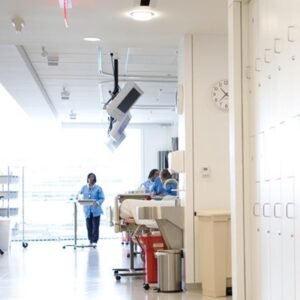🧠 What Is Prostate Cancer? September 21, 2025 drvishalsurgery@gmail.com 3:08...
Read MoreWhat Is Infertility?
When Should A Couple Seek Help?
Infertility: Causes, Diagnosis, and Treatment Options
Generally, if a couple has not conceived within one year of trying, it’s time to consider seeing a fertility specialist.
Some couples should seek help sooner, including:
Women who have irregular or absent menstrual cycles
Women age 35 and older who have been trying for 6 months
Women with a history of endometriosis, pelvic adhesions, or pelvic infections
Women who need to reverse a tubal ligation or have known tubal diseases
Men with abnormal semen analysis, or erectile or ejaculatory problems
Men who need surgery to remove blocked tubes (vas deferens or epididymis)
Men who need microsurgery to reverse a vasectomy or obtain sperm
Lesbian or single women requiring donor sperm
What Causes Infertility?
Infertility can be caused by many different factors.
In Women
Ovulation dysfunction
Tubal blockage
Endometriosis
Structural abnormalities of the uterus such as fibroids
In Men
Anatomic or hormonal problems that reduce the number and quality of sperm
In many cases, even with the most comprehensive evaluation, no single factor can be identified.
Fortunately, even when the cause of infertility cannot be determined, effective treatments are still available.
How Can Problems Be Diagnosed?
Standard Testing
Semen analysis – assesses the number and quality of the sperm
Hysterosalpingogram (HSG) – an X-ray dye test used to evaluate the uterine cavity and fallopian tubes
The HSG is performed by injecting dye through the cervix while observing on a monitor to confirm that the cavity of the uterus is normal and that both tubes are open.
Additional Testing
After reviewing patient history, physical exam, and previous results, fertility specialists may recommend:
Hormone level tests
Ultrasound of uterus and ovaries
Hysteroscopy and/or laparoscopy
Laparoscopy is an outpatient procedure that involves placing a thin scope through the navel to diagnose and treat conditions such as:
Endometriosis
Pelvic adhesions (scar tissue)
Ovarian cysts
Fibroid tumors
Tubal disease
What Treatments Are Available for Infertility?
Treatment options include:
Medical Therapy
Reproductive Surgery
Intrauterine Insemination (IUI)
Assisted Reproductive Technologies (ART) such as In Vitro Fertilization (IVF)
Medical Therapy
Medical therapy is used to correct ovulation dysfunction (irregular or infrequent periods).
If there are no underlying causes (like thyroid disease), the first step is oral medication to induce regular cycles.
If oral medication fails after six cycles, other treatments are considered.
Gonadotropin therapy is another option:
Induces ovulation when oral agents do not work
Offered for unexplained infertility
Stimulates more than one egg during a cycle
Administered as a daily injection for about a week
Requires monitoring with blood tests and ultrasound to:
Optimize timing
Reduce risk of multiple pregnancy
Prevent ovarian overstimulation
Reproductive Surgery

Surgery may be required to treat infertility-related conditions.
Minimally invasive laparoscopic surgery can:
Remove scar tissue
Treat endometriosis
Remove ovarian cysts or fibroids
Unblock fallopian tubes
Hysteroscopy can:
Remove polyps and fibroid tumors
Divide scar tissue
Open blocked tubes
Advantages of endoscopic surgery: reduced cost, faster recovery, fewer complications, less pain, better cosmetic results.
Laparotomy (open surgery) may still be needed for reversing tubal ligations or removing large fibroids.
Intrauterine Insemination (IUI)
Intrauterine insemination is an office procedure where:
Sperm are separated from semen fluid
Healthy sperm are inserted directly into the uterus
Used for:
Mildly abnormal semen analyses
Unexplained infertility (often combined with fertility drugs)
Single women and lesbian couples using donor sperm
In Vitro Fertilization (IVF)

IVF is a highly successful treatment for many causes of infertility, especially:
Irreparable tubal disease
Severe male factor infertility
The IVF Process:
Ovarian stimulation using fertility medication
Egg retrieval using ultrasound-guided needle (10–15 min procedure under sedation)
Fertilization
Sperm and egg are placed together in a culture dish
Or sperm is directly injected into each egg (ICSI)
Embryo culture – embryos grow 5–6 days to reach blastocyst stage
Embryo selection and transfer
Elective Single Embryo Transfer (ESET): Most women transfer just one embryo to reduce multiple pregnancies.
Additional healthy embryos can be frozen for future use.
Egg Donation & Surrogacy
Egg donation is an option for women who cannot produce healthy eggs
Gestational carriers (surrogacy) are considered for women without a uterus or with health conditions that prevent pregnancy
Egg & Ovarian Tissue Freezing
Ideal for cancer patients wishing to preserve fertility before undergoing treatments like radiation or chemotherapy.
Ovarian tissue reimplantation can produce new eggs
Egg freezing is now widely used and no longer considered experimental
Preimplantation Diagnosis & Screening (PGD/PGS)
Used to ensure embryos are genetically normal before pregnancy begins.
PGD – identifies genetic diseases
PGS – screens for chromosomal abnormalities
Embryo biopsy removes 5–10 cells from each embryo at blastocyst stage for testing.
Male Fertility Options
A male factor plays a role in at least 40% of infertility cases.
Both partners should be assessed during evaluation.
Male Infertili ty Services Include:
Microsurgical vasectomy reversal
Microsurgical correction of epididymal obstruction
Microsurgical varicocele ligation
Testicular and epididymal sperm extraction for IVF
Comprehensive semen analysis, antibody testing, oxidative stress tests, and sperm DNA damage assessments are offered.
Additional services:
Post-vasectomy screening
Sperm processing for IUI
Frozen donor semen for insemination
Sperm and tissue freezing before cancer treatment or vasectomy
Understanding Kidney Cancer and Your Treatment Options
Understanding Kidney Cancer and Your Treatment Options September 21, 2025...
Read MoreWhat Is Infertility?
What Is Infertility? September 21, 2025 drvishalsurgery@gmail.com 3:01 pm When...
Read MoreWhat is Chronic Kidney Disease (CKD)
Chronic Kidney Disease (CKD) September 21, 2025 drvishalsurgery@gmail.com 2:52 pm...
Read More


